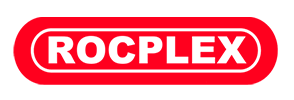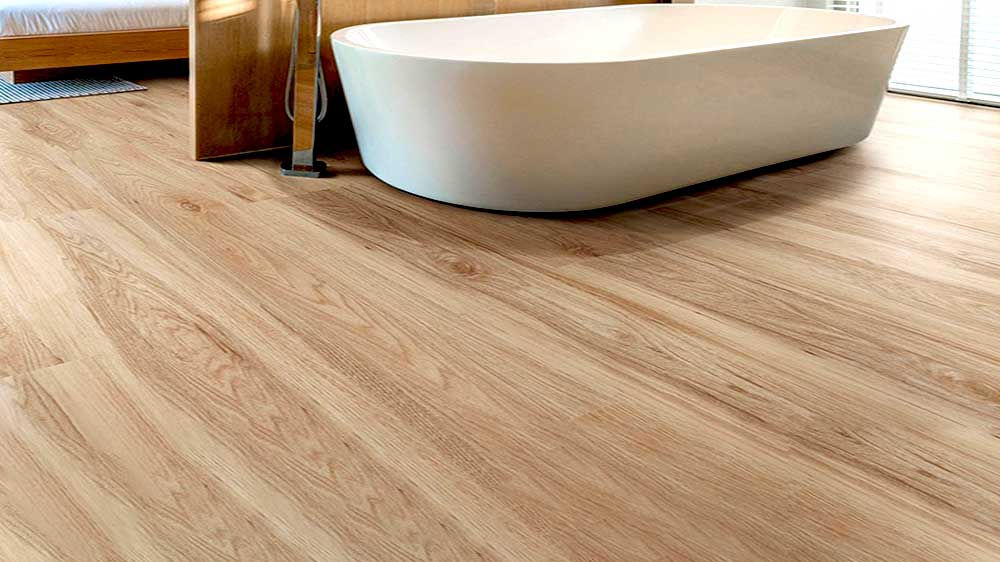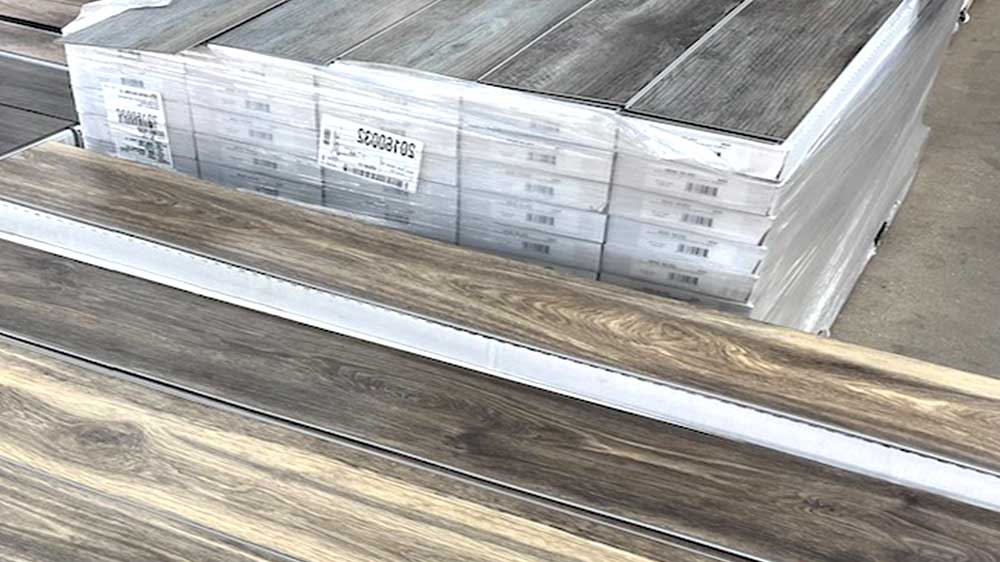What Is Vinyl Floor?
Vinyl flooring is a popular and versatile flooring option known for its durability, affordability, and ease of maintenance. It is made from synthetic materials, primarily polyvinyl chloride (PVC), and is designed to mimic the appearance of natural materials like wood, stone, or tile. Vinyl flooring is available in various forms, including sheets, tiles, and planks, each offering unique benefits and installation methods.
One of the main advantages of vinyl flooring is its resilience. It is resistant to scratches, stains, and water, making it an ideal choice for high-traffic areas and rooms prone to moisture, such as kitchens, bathrooms, and basements. Additionally, vinyl flooring provides a comfortable underfoot feel due to its flexible and cushioned nature.
Luxury vinyl plank (LVP) and vinyl floor tiles are among the most popular choices for homeowners. LVP offers the look of hardwood flooring without the high cost and maintenance, while vinyl tiles can replicate the appearance of ceramic or stone tiles. Both options are available in a wide range of colors, patterns, and textures, allowing homeowners to achieve their desired aesthetic.
Vinyl flooring installation is relatively straightforward, often requiring only basic tools and minimal preparation. This ease of installation makes it a favorite among DIY enthusiasts and professionals alike. Furthermore, vinyl flooring is an affordable option, providing excellent value for money without compromising on style or quality.
The Benefits of Vinyl Floor
Vinyl flooring offers numerous benefits that make it a popular choice for homeowners. From its durability to its aesthetic versatility, here are some key advantages of choosing vinyl flooring for your home.
Durability and Resilience
Vinyl flooring is known for its durability and resilience. It can withstand heavy foot traffic, making it suitable for busy households and commercial spaces. Its resistance to scratches and stains ensures that it maintains its appearance even in high-traffic areas.
Water Resistance
One of the standout features of vinyl flooring is its water resistance. Waterproof vinyl floor options are perfect for areas prone to moisture, such as bathrooms, kitchens, and laundry rooms. This water resistance also makes vinyl flooring easy to clean and maintain.
Aesthetic Versatility
Vinyl flooring is available in a wide range of styles, colors, and patterns. Luxury vinyl plank (LVP) and vinyl floor tiles can mimic the appearance of natural materials like wood, stone, and ceramic, allowing homeowners to achieve their desired look without the high cost and maintenance.
Comfort Underfoot
Vinyl flooring offers a comfortable and cushioned feel underfoot. This makes it a great option for areas where you spend a lot of time standing, such as kitchens. The flexibility of vinyl also helps reduce noise, creating a quieter environment.
Easy Installation
Vinyl flooring installation is relatively simple and can often be completed as a DIY project. With options like peel-and-stick vinyl floor tiles and click-lock vinyl floor planks, homeowners can save on installation costs and enjoy a quick and hassle-free process.
Cost-Effective
Vinyl flooring is an affordable option that provides excellent value for money. It offers the look and feel of more expensive materials without the high price tag. This makes it an attractive choice for budget-conscious homeowners who do not want to compromise on style or quality.
Types of Vinyl Floor
There are several types of vinyl flooring available, each with its own unique features and benefits. Understanding the different types can help you choose the best option for your home.
Luxury Vinyl Plank (LVP)
Luxury vinyl plank (LVP) is designed to mimic the appearance of hardwood flooring. It comes in plank form and is available in various colors and wood grain patterns. LVP is highly durable and water-resistant, making it suitable for any room in the house.
Vinyl Floor Tiles
Vinyl floor tiles can replicate the look of ceramic or stone tiles. They are available in various sizes and designs, offering a versatile option for any room. Vinyl floor tile are easy to install and replace, making them a practical choice for DIY projects.
Vinyl Sheet Floor
Vinyl sheet flooring is a continuous sheet of vinyl that is cut to size and installed in a single piece. This type of flooring is ideal for areas with high moisture levels, as it provides a seamless and water-resistant surface. Vinyl sheet flooring is available in a wide range of designs, including patterns that mimic wood, stone, and tile.
Waterproof Vinyl Floor
Waterproof vinyl floor options are designed to withstand high levels of moisture without damage. This makes them perfect for bathrooms, kitchens, and laundry rooms. Waterproof vinyl flooring is available in both plank and tile forms, providing flexibility in design and installation.
Peel-and-Stick Vinyl Floor Tiles
Peel-and-stick vinyl tiles are a convenient and cost-effective option for DIY installations. These tiles have an adhesive backing that allows them to be easily applied to the floor. Peel-and-stick vinyl tiles are available in a variety of designs, making them a versatile choice for quick and easy updates.
Click-Lock Vinyl Planks
Click-lock vinyl planks are designed for easy installation. The planks snap together without the need for glue or nails, creating a floating floor that can be installed over existing flooring. Click-lock vinyl plank are available in various styles and designs, offering a durable and attractive flooring solution.
Installation and Maintenance
Proper installation and maintenance are key to ensuring the longevity and performance of your vinyl flooring. Here are some tips for installing and maintaining vinyl floors.
Installation Tips
- Prepare the Subfloor:Ensure the subfloor is clean, dry, and level. Remove any existing flooring and repair any imperfections in the subfloor.
- Acclimate the Flooring:Allow the vinyl flooring to acclimate to the room temperature and humidity for at least 48 hours before installation.
- Measure and Cut:Measure the area and cut the vinyl flooring to fit. Use a sharp utility knife for precise cuts.
- Follow Manufacturer Instructions:Follow the manufacturer’s instructions for installation, whether you are using peel-and-stick tiles, click-lock planks, or sheet vinyl.
- Use Proper Tools:Use the appropriate tools for the type of vinyl flooring you are installing. This may include a utility knife, tape measure, and a roller.
Maintenance Tips
- Regular Cleaning:Sweep or vacuum the floor regularly to remove dirt and debris. Use a damp mop with a mild cleaner for deeper cleaning.
- Avoid Harsh Chemicals:Avoid using harsh chemicals or abrasive cleaners, as they can damage the vinyl surface.
- Protect from Heavy Furniture:Use furniture pads to protect the floor from heavy furniture and prevent scratches.
- Address Spills Promptly:Clean up spills immediately to prevent staining and damage.
- Avoid Direct Sunlight:Prolonged exposure to direct sunlight can cause vinyl flooring to fade. Use blinds or curtains to protect the floor from UV rays.
Vinyl Floor Design Ideas and Inspirations
Vinyl flooring offers endless design possibilities. Here are some inspiring ideas to incorporate vinyl flooring into your home.
Rustic Charm with Wood-Look Vinyl Floor Planks
Wood-look vinyl planks can create a warm and inviting atmosphere in any room. Choose planks with a distressed or hand-scraped finish for a rustic charm. Pair with farmhouse decor and neutral color palettes for a cohesive look.
Modern Elegance with Stone-Look Vinyl Tiles
Stone-look vinyl tiles can add a touch of modern elegance to your home. Choose tiles with a sleek and polished finish for a contemporary look. Pair with minimalist decor and bold accent colors for a stylish and sophisticated space.
Coastal Vibes with Whitewashed Vinyl Planks
Whitewashed vinyl planks can evoke the feeling of a beachside retreat. Choose planks with a light and airy finish for a coastal vibe. Pair with coastal decor, such as seashells and driftwood, for a serene and relaxing environment.
Industrial Loft with Concrete-Look Vinyl Tiles
Concrete-look vinyl tiles can create an industrial loft aesthetic in your home. Choose tiles with a matte and textured finish for an authentic look. Pair the tiles with exposed brick walls, metal fixtures, and vintage decor for a stylish industrial space.
Traditional Elegance with Patterned Vinyl Tiles
Patterned vinyl tiles can add a touch of traditional elegance to any room. Choose tiles with intricate designs and classic patterns for a timeless look. Pair with antique furniture and rich fabrics for a sophisticated and elegant space.
Vinyl Floor in Different Rooms
Vinyl flooring can be used in various rooms throughout your home, each offering unique benefits and aesthetic appeal.
Living Room
In the living room, vinyl flooring can add warmth and style. Choose luxury vinyl plank for a wood-like appearance or stone-look vinyl tiles for a more elegant touch. Vinyl flooring is durable enough to withstand heavy foot traffic, making it a practical choice for this busy area.
Kitchen
Vinyl flooring is an excellent choice for the kitchen due to its water resistance and ease of cleaning. Waterproof vinyl floor options are particularly suitable for this high-moisture area. Choose a design that complements your cabinetry and countertops to create a cohesive look.
Bathroom
In the bathroom, waterproof vinyl flooring is essential. Vinyl floor tiles or sheet vinyl provide a seamless and water-resistant surface that is easy to maintain. Choose designs that mimic stone or ceramic tiles for a stylish and functional bathroom floor.
Bedroom
Vinyl flooring in the bedroom can create a cozy and comfortable atmosphere. Luxury vinyl plank with a wood-look finish can add warmth and elegance to the space. Vinyl flooring is also easy to clean, making it a practical choice for bedrooms.
Basement
Vinyl flooring is ideal for basements due to its moisture resistance. Choose waterproof vinyl floor options to protect against potential water damage. Vinyl flooring can create a comfortable and inviting space in your basement, whether it’s used for a home gym, playroom, or additional living area.
Customizing Your Vinyl Floor
Customizing your vinyl floor allows you to create a unique look that reflects your personal style. Here are some customization options to consider:
Staining and Painting
Staining and painting vinyl flooring can enhance its appearance and match your decor. Stains can add depth and richness to the floor, while paint can provide a pop of color or a unique pattern. Ensure you use products specifically designed for vinyl to achieve the best results.
Adding Borders and Inlays
Adding borders and inlays can create a custom look for your vinyl floor. Borders can define the edges of the room or highlight specific areas, while inlays can create intricate patterns or designs. These customizations can add a touch of elegance and sophistication to your flooring.
Texturing and Embossing
Texturing and embossing can enhance the look and feel of your vinyl floor. Textured vinyl can mimic the natural texture of wood or stone, adding realism to the design. Embossing can create raised patterns that add depth and interest to the floor.
Vinyl Floor Combining Different Styles
Combining different styles of vinyl floor can create a unique and personalized look. For example, you can mix wood-look planks with stone-look tiles to create a visually interesting and dynamic floor design. This approach allows you to play with different textures and patterns to achieve your desired aesthetic.
FAQs of Vinyl Floor
Q: What are the benefits of vinyl floor?
A: Vinyl flooring is durable, water-resistant, easy to install, and available in various styles and designs.
Q: Is vinyl floor suitable for high-traffic areas?
A: Yes, vinyl flooring is highly durable and can withstand heavy foot traffic, making it suitable for high-traffic areas.
Q: Can vinyl floor be installed in bathrooms?
A: Yes, waterproof vinyl floor is an excellent choice for bathrooms due to its water resistance.
Q: How do I clean and maintain vinyl floor?
A: Regularly sweep or vacuum the floor, use a damp mop with a mild cleaner, and avoid harsh chemicals to maintain vinyl floor.
Q: Can vinyl flooring be installed over existing floor?
A: Yes, many types of vinyl flooring, such as click-lock planks, can be installed over existing flooring.
Q: Is vinyl floor a good option for DIY installation?
A: Yes, vinyl floor is relatively easy to install and can be a great DIY project for homeowners.
Post time: Aug-17-2024




